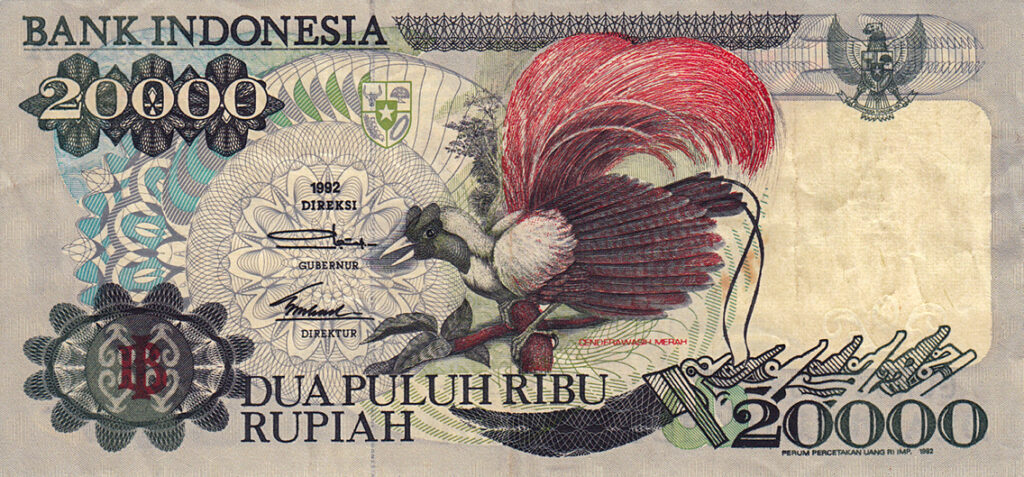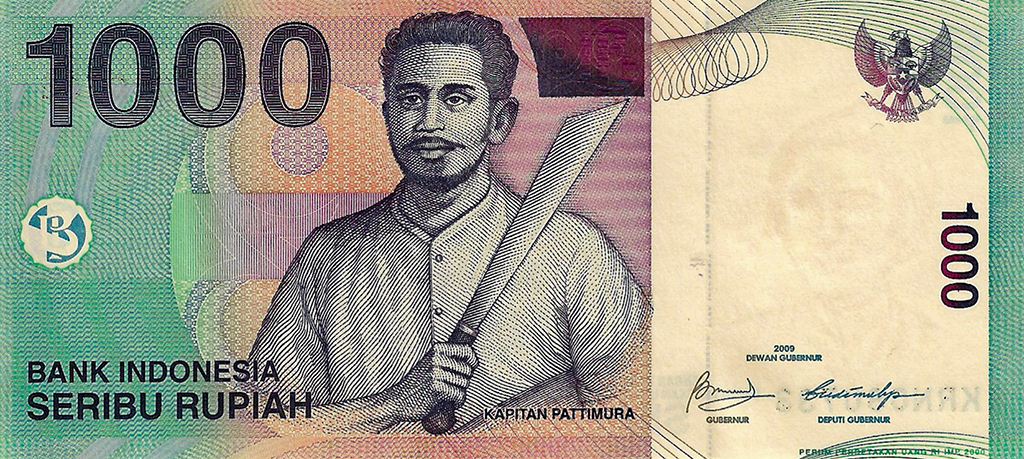
The many facets of the Indonesian Rupiah

The very idea of Indonesia as a single nation is simply outrageous; 17000+ Islands, 700+ languages, 1300+ ethic identities, and a whole galaxy of differences and conflicts. Indonesia, however celebrates this diversity; it has adopted an Old Javanese phrase “Bhinneka Tunggal Ika” as its motto that literally means “Unity in Diversity.” Spread over a vast geographical area – over 5000 kilometers in East-West and 1700 kilometers in North-South direction – the archipelago, lavishly littered with mountains and volcanos comprises of some of the most spectacular tropical landscapes, vibrantly abuzz with a range of flora and fauna making it a global diversity hotspot. Colonial imprints have failed to penetrate deep into the Island nation that got its independence from the Dutch in 1949 CE. During its colonial rule, the Dutch circulated banknotes in “Guldens” before the Japanese attack and subsequent occupation. Japanese Government printed their own version of local banknotes in Guldens. Independence was proclaimed by 1945 and first Indonesia Rupiah was issued in 1945; by 1949, Indonesia shrugged off its colonial past completely and a new era of freedom heralded with issue of a new currency.






Indonesian Rupiah was not merely a new currency but a whole new identity for the Indonesians. This new identity called for a novel thought process. If the old Gulden banknotes represented an outsider’s view, the newly designed Rupiah offered an intimate peep into the real Indonesia. With designs celebrating Indonesia’s unmatched Anthropological, Cultural and Natural diversity, Rupiah Banknotes became an important platform for showcasing the varied landscapes, flora and fauna, aviary, monuments of importance, eminent personalities and life and times of ordinary people. The initial banknotes were simple, mostly decorated with geometrical line drawings. They were printed plainly with monotone color on flat paper. During this time, Banknotes were also issued in denominations of “Sen” (1 Rupiah = 100 Sen) however afterwards because of uncontrolled inflation the Rupiah itself has been renamed and revalued many times.


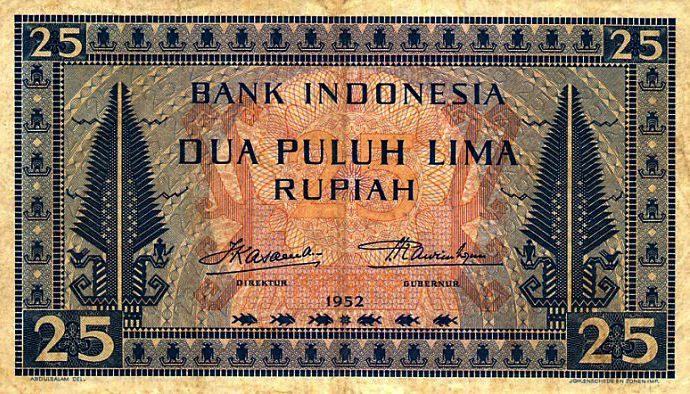



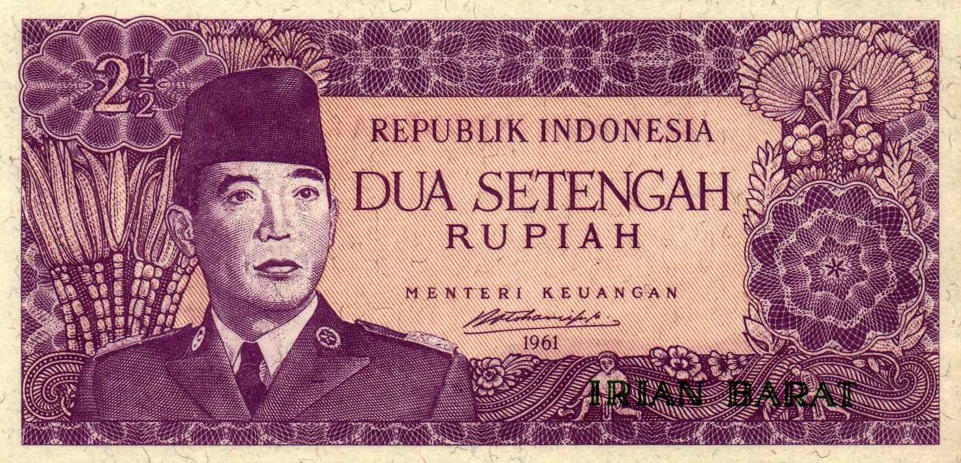
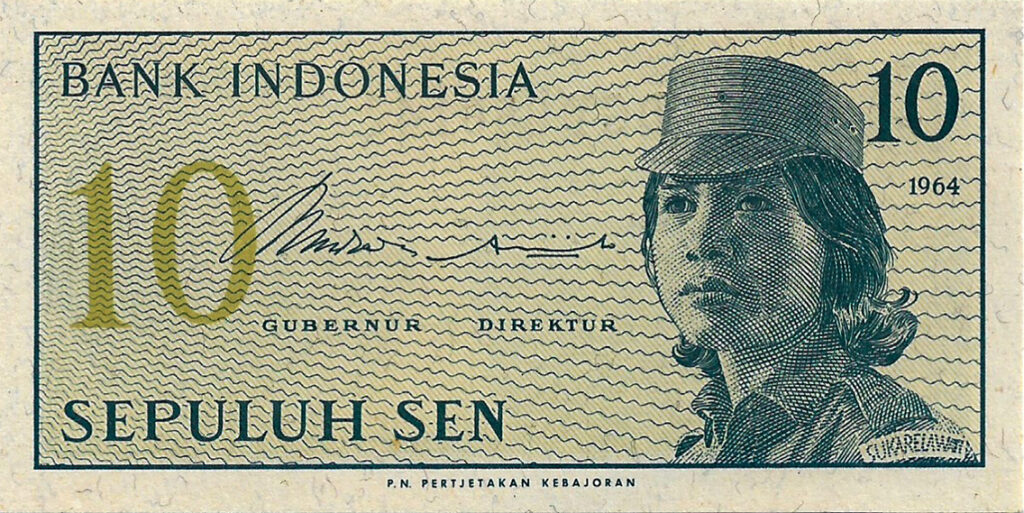

Main Features | The visually pleasing banknotes are divided aesthetically along vertical and horizontal lines. On the front, we find (i) Numerals for denominations in two sizes at diagonally opposite corners (ii) Texts for Denomination in words, Issuing Authority – Bank Indonesia or Negara Kesatuan Republik Indonesia (Literally meaning The Unitary State of the Republic of Indonesia), and designation of two signatories (iii) Images – One dominating personality in lower denominations and Two or more in higher denomination banknotes. Garuda Pancasila, the national emblem of Indonesia sits prominently amongst a host of other graphic elements including the Bank Indonesia Logo. On the back, the theme is mostly centered around the Indonesian Culture – People their life and pastimes. Numerals are used for denomination at two diagonally opposite corners and Serial Number at the remaining two corners. Texts include Bank Indonesia and two small lines in local language before the banknote denomination in words:
Dengan rahmat tuhan yang esa, negara kesatuan republik Indonesia, Mengeluarkan Rupiah sebagai alat pembayaran yang sah dengan nilai
With the grace of one God, the unitary state of the republic of Indonesia … Issuing Rupiah as a legal tender with a value of
Images are seen in two sets (i) Leading Image usually one and at times two (ii) Supporting images could range between 3-5 in number suitably scaled and merged with the main image. Tessellating backgrounds have been added to enhance the visual appeal and richness of the banknotes. Printed by Perum Peruri in vibrant polychromatic colors, the Indonesian Rupiahs have successfully portrayed the diversified yet all-inclusive idea of Indonesian nationhood.



